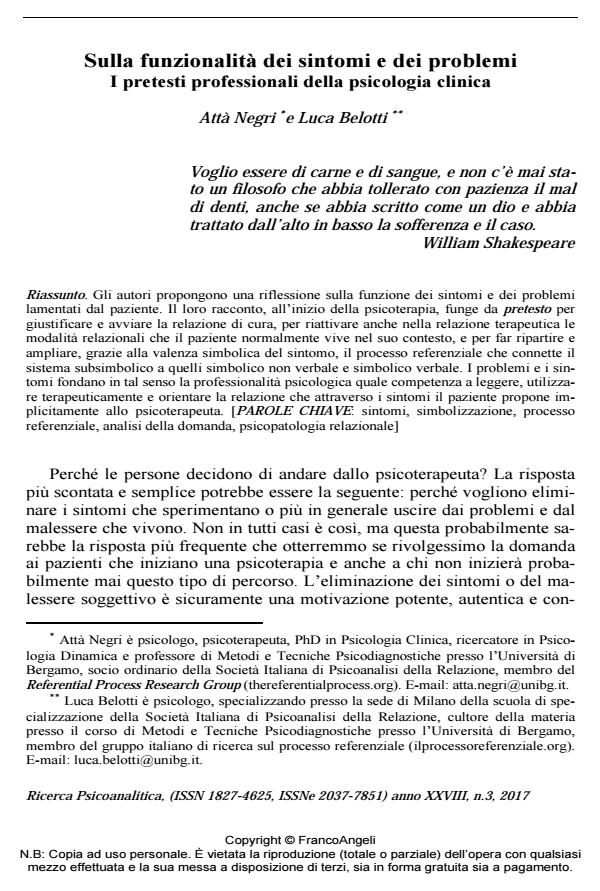On the function of symptoms and complaints. Professional pretexts in clinical psychology
Journal title RICERCA PSICOANALITICA
Author/s Attà Negri, Luca Belotti
Publishing Year 2017 Issue 2017/3
Language Italian Pages 15 P. 21-35 File size 187 KB
DOI 10.3280/RPR2017-003003
DOI is like a bar code for intellectual property: to have more infomation
click here
Below, you can see the article first page
If you want to buy this article in PDF format, you can do it, following the instructions to buy download credits

FrancoAngeli is member of Publishers International Linking Association, Inc (PILA), a not-for-profit association which run the CrossRef service enabling links to and from online scholarly content.
The authors present a reflection of the function patients’ symptoms and complaints. Their description at the start of treatment functions as a pretext to justify and initiate the therapeutic relationship, to reactivate the relational modes that patients usually experience in their context also in the therapeutic relationship, and to restart and expand, with the help of the symbolic value of symptoms, the referential process that connects the sub-symbolic system with the non-verbal and verbal symbolic systems. For this reason, complaints and symptoms form the foundation of the psychological professionalism that consists in the ability to read, therapeutically use, and orient the relationship that patients implicitly suggest to psychotherapists.
Keywords: Symptoms, symbolization, referential process, analysis of demands, relational psychopathology
- Commento al caso clinico di A. Micheloni Giuseppe Martorana, in Ricerca Psicoanalitica /2021
DOI: 10.4081/rp.2021.536
Attà Negri, Luca Belotti, Sulla funzionalità dei sintomi e dei problemi - I pretesti professionali della psicologia clinica in "RICERCA PSICOANALITICA" 3/2017, pp 21-35, DOI: 10.3280/RPR2017-003003